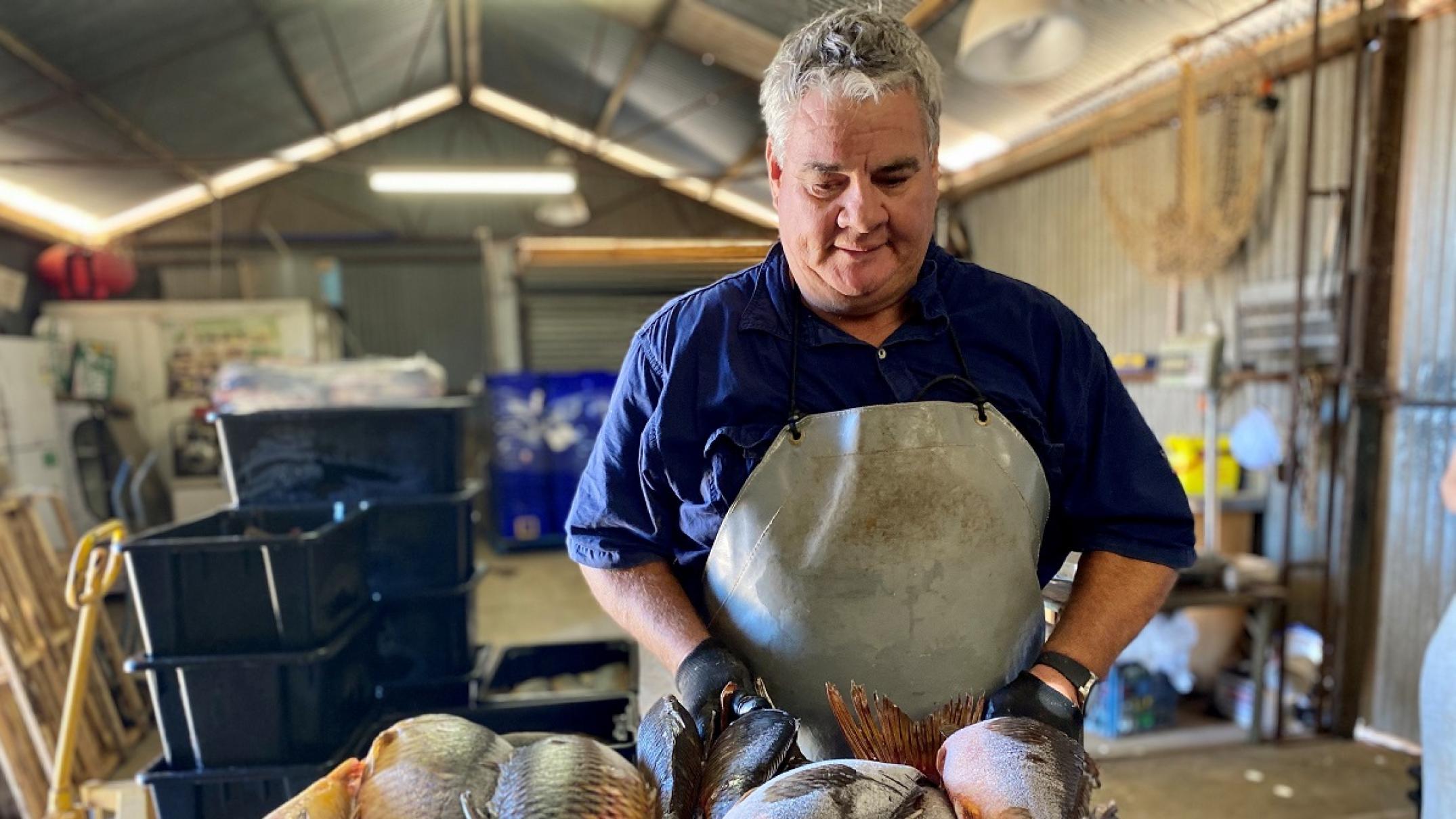Commercial fishermen and fish fertiliser suppliers are struggling to keep up with a demand for carp as people spend more time gardening and growing their own food during the pandemic.
Key points:
- Carp accounts for 90 per cent of fish biomass in some areas of the Murray-Darling Basin
- A carp trap on the River Murray in Blanchetown removes an average of 80 tonnes of carp a year
- Fishermen are seeing increasing consumer demand for carp in Australia, but its use in fish fertiliser is skyrocketing
Farmed and known as one of the most popular freshwater table fish in Asia and Europe, carp is one of the worst introduced pest species in Australia, with significant environmental and economic impacts.
The demand for carp for human consumption is slowly rising in Australia, but the species is sold primarily for fertiliser and bait.
While the high demand for fish fertiliser has introduced some challenges, the general manager of fertiliser supplier Charlie Carp, Ron Kopanica, said it was great to see more of the pest taken out of rivers.
“We chose carp because it’s a predator in our waterways and it’s about the environment for us too, trying to help keeping our rivers cleaner.
“We have been flat out and we had to put more staff on because so many people have turned to gardening and fertiliser demand has jumped dramatically.”
Catching more carp also meant they needed more fishermen sourcing the fish.
“Usually we would have three fishermen, but we now have about eight fishermen supplying us.”
Fisherman adapt to shifting markets
For commercial fisherman Garry Warrick, who fetches carp in the Murray River and Lake Bonney for human consumption, bait, fertiliser, and turtle feed, gardening enthusiasm across the country has been welcome news.
Luckily the carp destined for bait could be shifted to the fertiliser market, keeping Mr Warrick busy catching the pest species.
While he has been catching carp for other industries for 35 years, in recent times he has witnessed an increasing consumer demand at seafood markets where he now sends up to two tonnes per week.
“I think they’ve [carp] got a bad reputation in Australia. But if you know what you are doing carp can be quite nice,” he said.
He believed if there was more demand for carp, more people would be fishing for it, and that could be beneficial to the environment.
Environmental impact on river systems
The Commonwealth Environmental Water Office (CEWO) defines carp as an abundant, invasive fish species that has been contributing to environmental degradation across the Murray-Darling Basin since the 1960s.
According to the CEWO, the impacts of carp include a reduction in water quality, riverbank damage, and potential contribution to algae blooms which comes at the expense of native fish species and aquatic vegetation.
It also states carp account for 90 per cent of fish biomass in some areas of the basin.
The plan to release a carp herpes virus into Australian waterways to manage the species has been delayed, and the Department of Agriculture, Water and the Environment said its scientific work on the National Carp Control Plan was expected to be finished by June 2021.
Meanwhile, other small projects such as the adoption of a Williams’ cage — trapping carp at weirs and locks throughout the Murray-Darling basin system — are removing some of the fish.
Senior manager of Murray River operations at SA Water, Garry Fyfe, said they trapped quite a quantity of carp throughout the basin.
“On average, we remove about 80 tonnes of carp in a year at Lock 1. In terms of the total biomass in the river that is not a very big number. However, it’s a start.
“It’s just a small part of it, we are doing our small, little bit. [But] if you combine here [Lock 1] with a couple of other sites in NSW, its all the small, little steps which hopefully might keep them in some sort of balance.”




